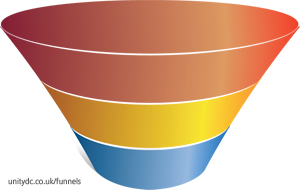-
Notifications
You must be signed in to change notification settings - Fork 3
Encouraging participation
Let's begin with the end in mind. Our main objective is to encourage data submission and further participation in the larger Open Tree of Life project. What does success look like? How can the Tree Illustrator contribute to this success?
Quality versus quantity: Would we rather have many submissions of mixed quality, or fewer studies in the system but with more polish? Do we believe that unfinished studies will eventually attract curation effort, perhaps from volunteer curators?
Types of participant: Some of these include data contributors, expert curators, API consumers, tool builders, and "promoters" to the general public. Should we focus more effort on reaching some of these, possibly at the expense of others?
Types of participation: Aside from the obvious submission and curation of one's own studies, what else would our ideal contributors do? And what kind of work is most valuable to the project's goals? Here's one possible path from visitor to champion:
- Explore and comment on the synthetic tree and source trees.
- Blog about Open Tree, introduce others to the project.
- Cite the synthetic tree, its source studies, and other fruits of the project.
- Explore studies in the system, using the curation Tools tab to work and play with them.
- Submit newly-published (or older) studies and curate them for synthesis.
- Contribute code to the Open Tree project, or build third-party tools that use our APIs and data.
- [more ideas welcome here... please order these from casual to "fully engaged"]
Of course, each participant will do some of these things, but not all. Are some of these contributions more precious, or worth greater effort to obtain?
Software startups live and die by participation. They often think in terms of customer acquisition or customer development, and one common metaphor used is a funnel that represents the effort to coax casual visitors into becoming engaged participants. This model also considers the points of friction or obstacles that must be overcome, and the rewards for participation along the way.
(As an aside: This might seem like an odd comparison, but I believe we're also searching for "paying customers" -- busy people who will contribute their time and attention.)
Here's one roadmap for "customer development" in Open Tree:
| Level of engagement | Forms of participation | Friction / obstacles | Rewards |
|---|---|---|---|
| visitor | learns, understands | need awareness of OpenTree, and a usable link | neat stuff! |
| commentator | leaves comments and feedback | wrangling comment tools; domain expertise? | making a difference |
| data user | cites studies; uses source trees | learning citation standards; learning tools | advancing their own work |
| champion | brings new participants | alignment with mission and values | affiliation; attribution? |
| curator | adds and curates studies | GitHub account; learning curation tools; committing time | citations; affiliation |
| power user | uses APIs or local docstore | learning and using APIs | get more work done, faster |
| toolmaker | builds OT or third-party tools | navigating OT codebase and APIs | contribution to project and other users; attribution |
So how can the Tree Illustrator contribute to user development? By reducing friction and enhancing rewards for participation. Some ideas:
-
Using the Tree Illustrator requires a GitHub login; this will already be in place when someone starts to use other Open Tree tools, or vice versa.
-
The Tree Illustrator shares layout, navigation, and UI conventions with other Open Tree tools, accelerating the learning curve for both.
-
Illustration tools are shared across the Tree Illustrator, Arbor webapps, and the Tools tab of the Open Tree curation app. This familiarity is inviting and speeds the learning curve.
-
Data entered into the Tree Illustrator (or Arbor sandbox) can be imported into new studies in Open Tree upon publication. Data from the Open Tree docstore can be easily dropped into the Tree Illustrator or Arbor sandbox for analysis, visualization, and exploration.
[This is all up for discussion. Corrections and additions welcome! =jimA=]
